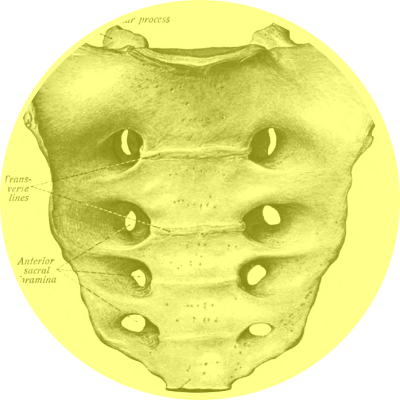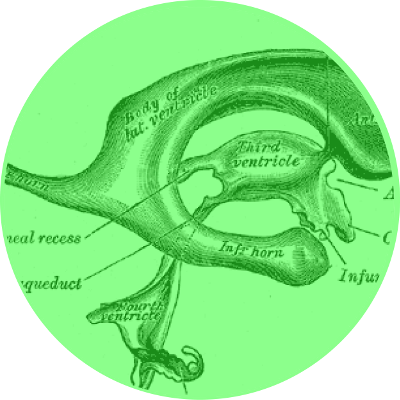Craniosacral Therapy
What is Craniosacral Therapy?
Craniosacral Therapy (from cranium = skull, sacrum = sacral bone) is a gentle manual form of bodywork. It encourages relaxation and helps the body's natural capacity for self healing.  The sense of self is promoted, which often sustainably helps avoiding damaging movements or influences.
The sense of self is promoted, which often sustainably helps avoiding damaging movements or influences.
Craniosacral Therapy is a holistic form of bodywork that has proven itself for treating various symptoms or illnesses. It is applied against back pains, TMJ syndrome, chronic pain, digestive disorders and psychosomatic disorders but also accompanying personal development processes and supporting health in general. The focus does not lie on the symptom or the illness but on the potential for health and well-being – and this potential is being fostered by Craniosacral therapy.
How does Craniosacral Therapy work?
The Liquor and its Rhythm
The Craniosacral system lies between cranium and sacrum. “Liquor Cerebrospinalis” is the fluid that flows around the linings of the brain and spinal cord and protects and nourishes them. This liquid moves up and down in pulses and forms the Craniosacral rhythm – this rhythm can be felt on the whole body. Imbalances of the Craniosacral rhythm point to blockages and are treated by gentle touch. Throughout an extensive and thorough training I learned to perceive and treat these subtle movements and processes. 
Different Layers of Treatment: Bones, Fascias and Inner Organs
In order to explain how Craniosacral Therapy works, one needs to take a look on the structures that are treated: besides the fluid level with the liquor there are other structures of the body that can be treated. Depending on the indication I might for example focus on the bone structures and help the body correcting imbalances through creating more space though using subtle treatment techniques.
The facias, too, are a very important aspect during the Cranio treatments. Since a couple of years research in universities all over the world are showing their immense importance for the body, its health and their role in diseases and healing. The whole body and all its structures (organs, muscles, bones, tendons, ligaments) are finely woven through by a net of this collagenous fibres. Facias give the body shape, flexibility and stability and connect extensive parts of the body. This also explains why a lot of symptoms are originating somewhere else than where the pain is felt, for example lower back pains which originate from malpositioning of the neck. Through the long and subtle touch during Cranio treatments the facias have time to release agglutinations, reorganise and cure pain in a very gentle way.
Like in Osteopathy, there are visceral techniques in Cranio, too. Hereby, soft techniques support and stimulate the functions of inner organs in a gentle way.
Stillness and Deep Relaxation: Effects on the Vegetative Nervous System
Profound relaxation is a very important aspect of Craniosacral Therapy. A deep silence evolves during the treatments that creates space for healing. The reason for this lies in the nervous system: during Craniosacral Treatments the parasympathetic nervous system is at work, which is in charge of recreation, sleep and regeneration. Its counterpart – the sympathetic nerve makes us physically and mentally reactive, for example to prepare us for an important presentation, a sporting contest – or in former times in case of a saber-toothed attac (“fight or flight”). The balance of these two parts of the nervous system is important for a healthy life. During permanent stress the sympathetic nerve is working all the time and the parasympathetic nerve is blocked – the body does not have the possibility to regenerate, relax, the digestion cannot work properly, the blood pressure is constantly too high, the muscles are tense and so on.
Many people nowadays have difficulties to relax, which hinders regeneration and healing and can represent itself in form of migraine, irritable bowl syndrome, chronic unspecific back pains, tinnitus or nightly teeth grinding.
The deep stillness and relaxation during Craniosacral Treatments are health-promoting, improve your sense of self and help becoming more present in your own body. Often people feel euphoric and vitalised after Cranio treatments, as if they had filled up energy. Others are tired and are looking forward to more resting at home as they have found the necessary peace for it, which is hard once they are on a high stress level.

